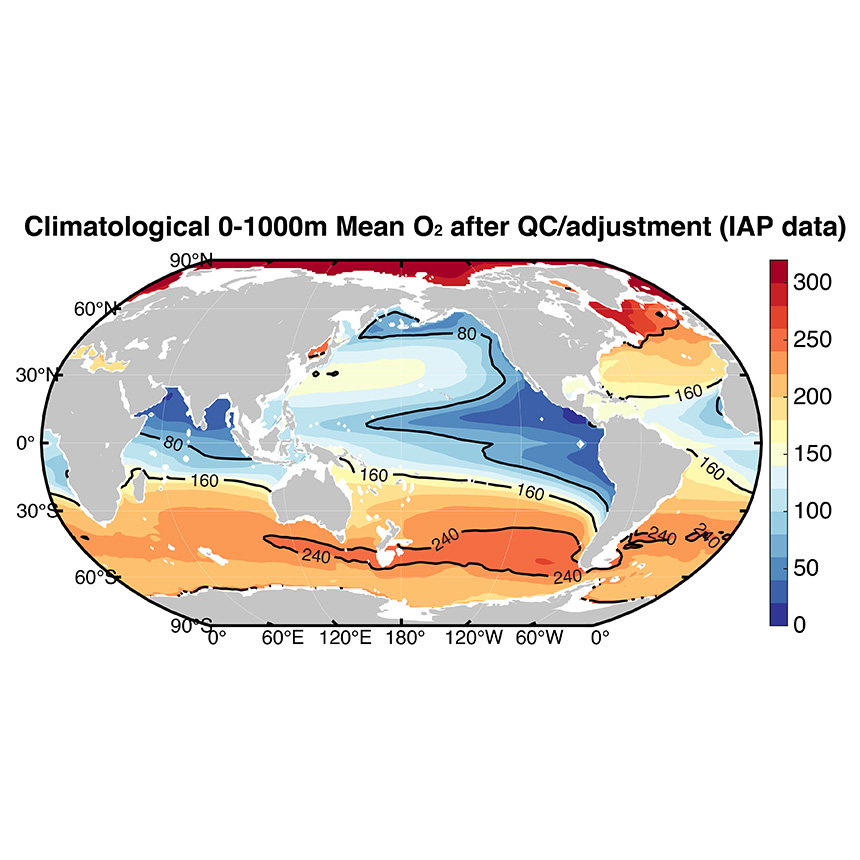Primary Contact of the Product:
IAP
Product Links
IAP: ocean oxygen product from Institute of Atmospheric Physics.
For IAP analysis, the original in situ oxygen profile observations are from two databases: the World Ocean Database (WOD) and the Argo Global Data Assembly Center (GDAC). World Ocean Database represents the largest depository of the dissolved oxygen profile data, including Ocean Station Data (OSD), and high-resolution CTD profiles. Argo float data are from GDACs; only adjusted and QC-ed data are used. A newly available quality control (QC) procedure has been applied for oxygen profiles from OSD, CTD and Argo instruments. This procedure includes 11 checks to remove outliers and erroneous data for different reasons and features. Based on an inter-comparison between CTD and OSD, Argo and OSD, it has been identified that there is an overall Argo oxygen offset and should be adjusted according to sensor and country. An Ensemble Optimal Interpolation approach is used to fill the data gaps and provide a gridded oxygen analysis from 1m to 6000m with a spatial resolution of 1°×1° since ~1960.
| Authors | Affiliation |
|---|---|
| Lijing Cheng | (IAP, CAS, China) |
| Viktor Gouretski | (IAP, CAS, China) |
| Juan Du | (IAP, CAS, China) |
How to cite BGC-Argo Product
We kindly ask users to cite this product as indicated on the product webpage and DOIs provided in the link below. Proper citation ensures that the use of the dataset is correctly tracked and credited. Please also note that OneArgo data products are freely available without restriction. However, to help us track usage and assess the impact of these products, we request that users include an appropriate acknowledgement in any resulting publications or derived products.In addition to citing the product DOI, please include the following acknowledgement:
"The OneArgo data were collected and made freely available by the International Argo Program and the national programs that contribute to it (https://argo.ucsd.edu, https://www.ocean-ops.org). The OneArgo Program is part of the Global Ocean Observing System."
We greatly appreciate your cooperation in supporting open science and the continued development of these data products.


